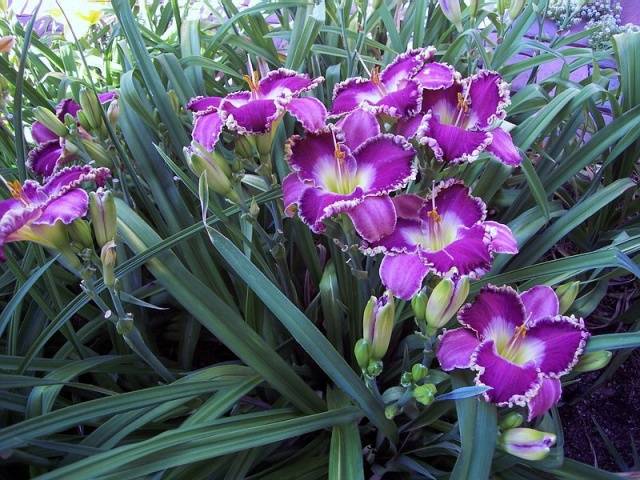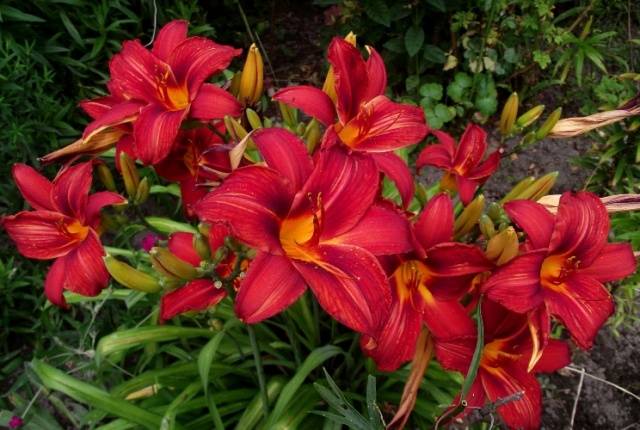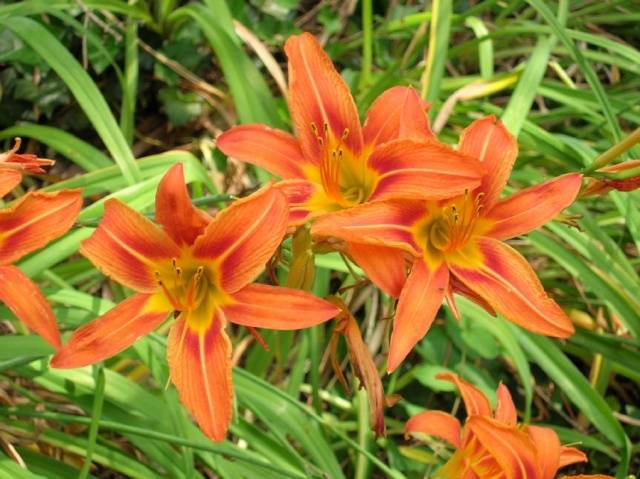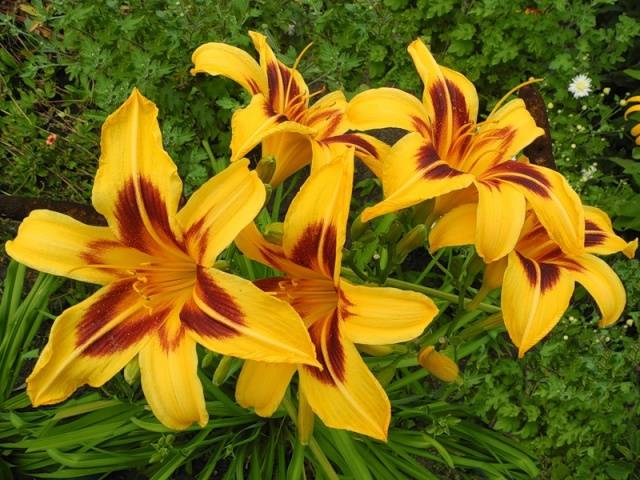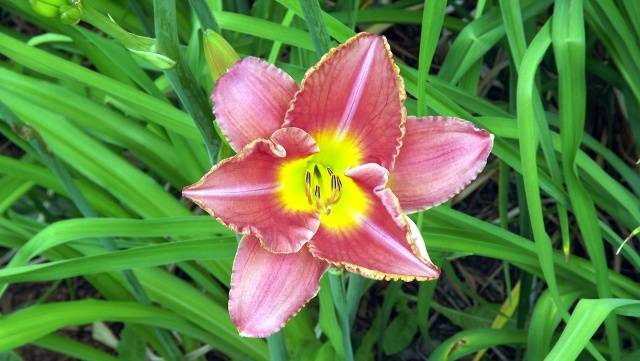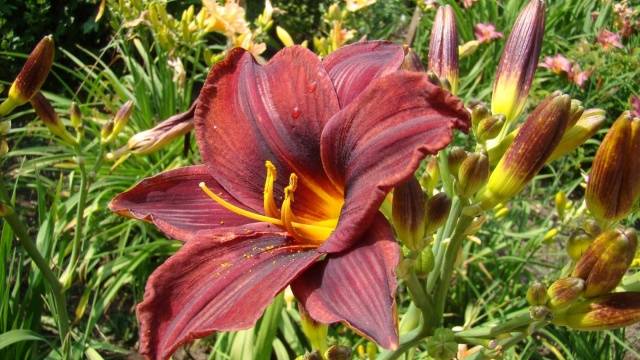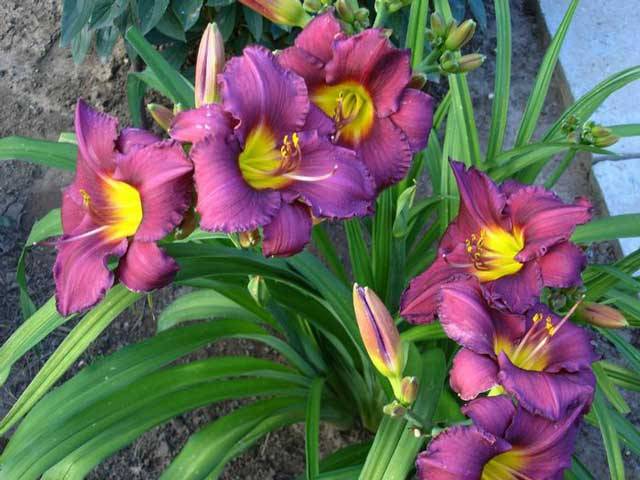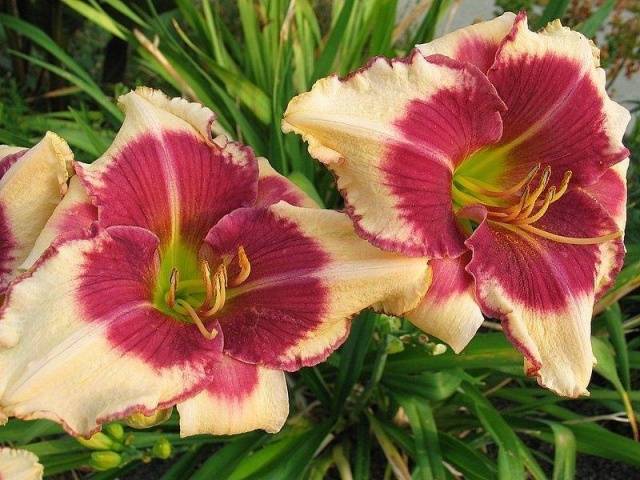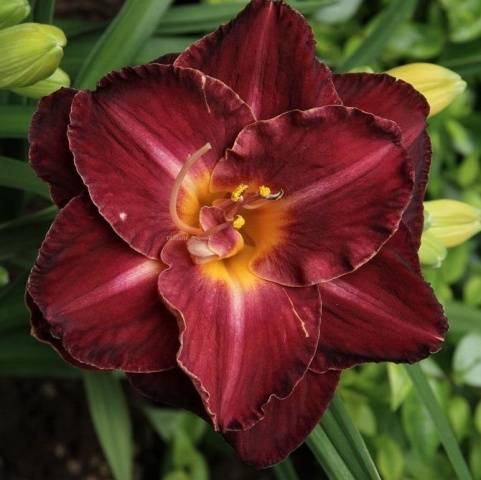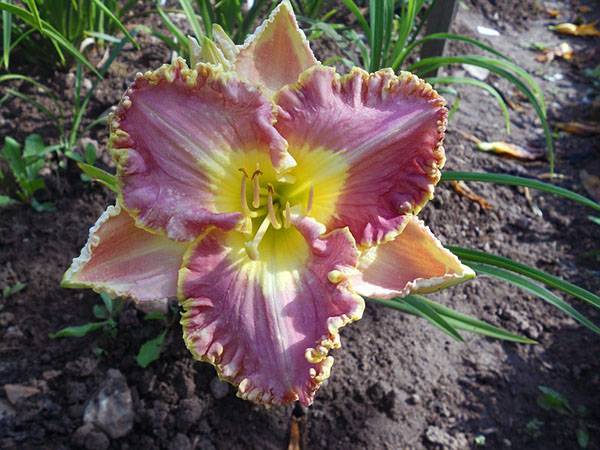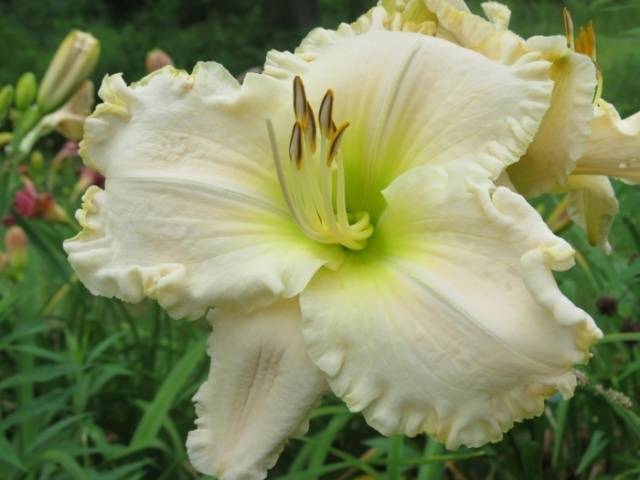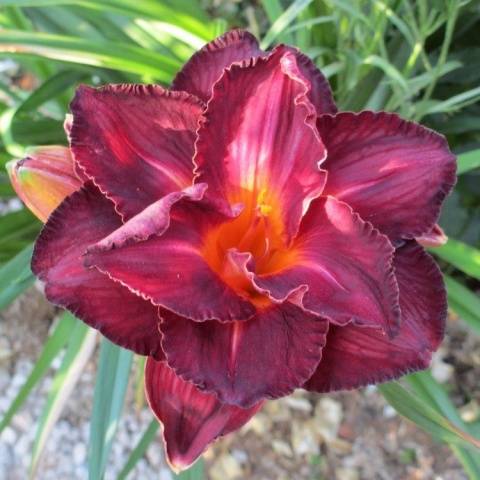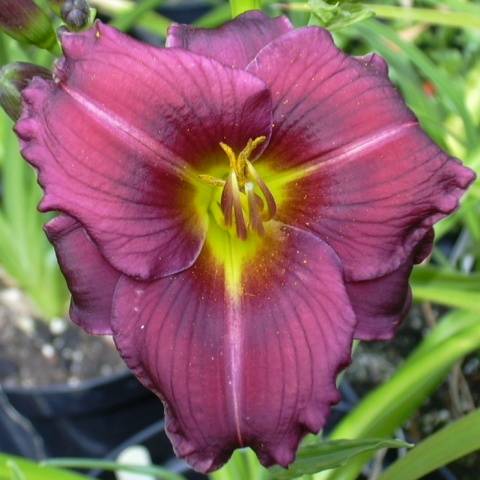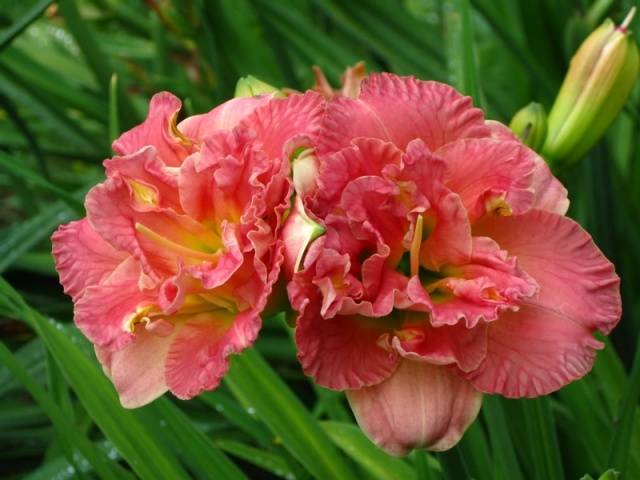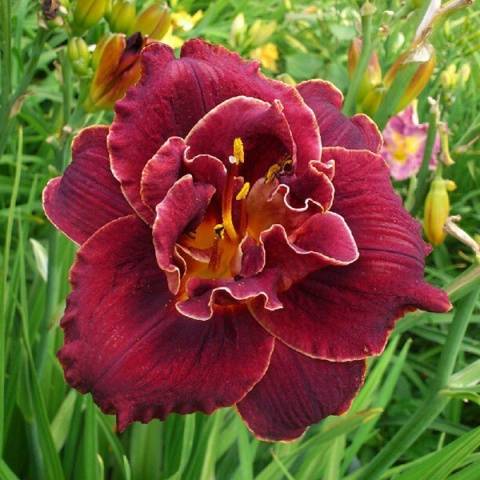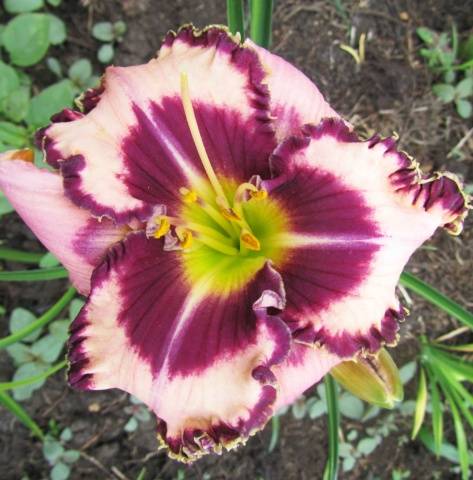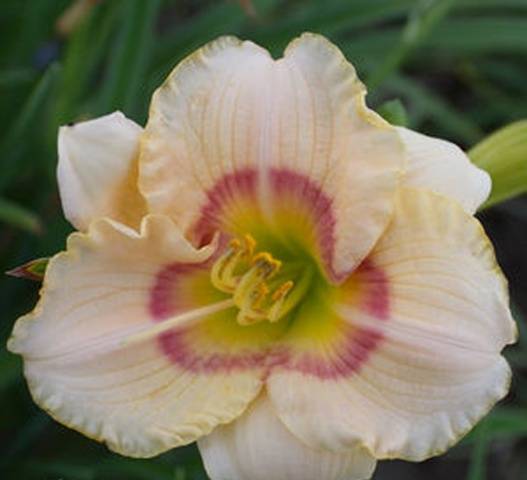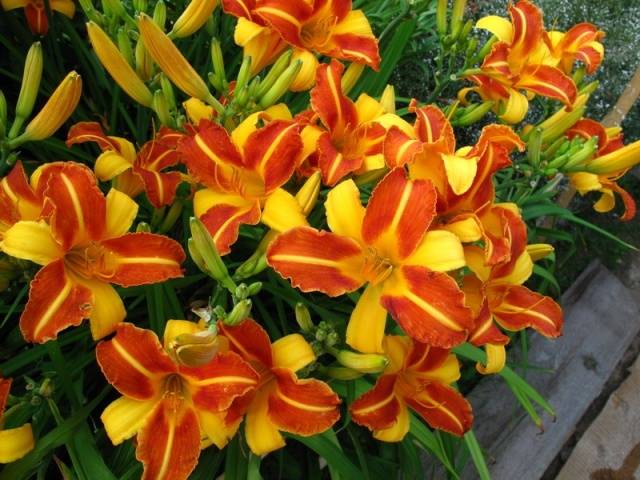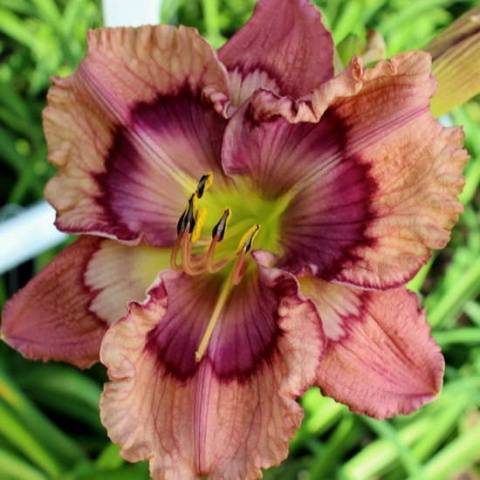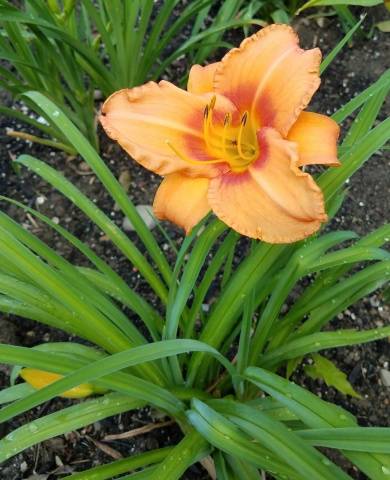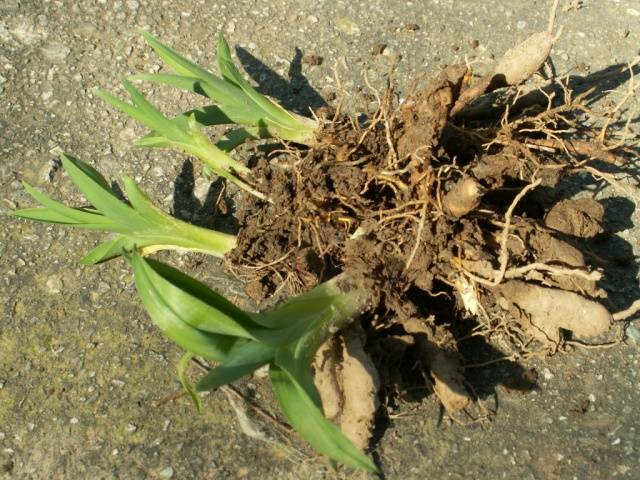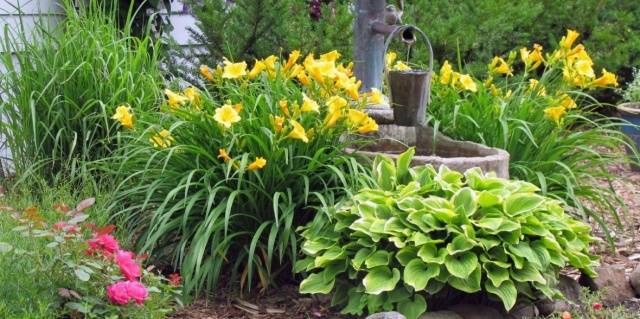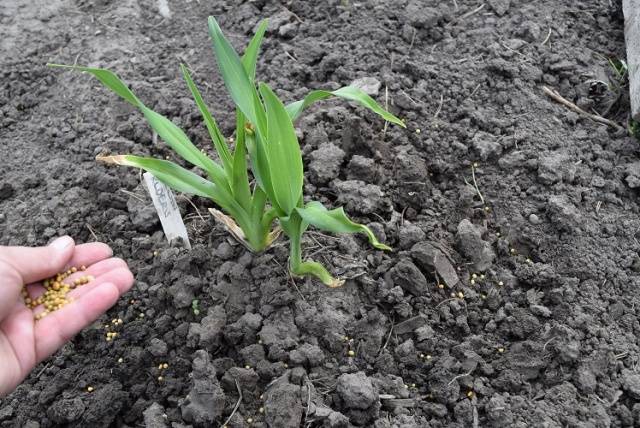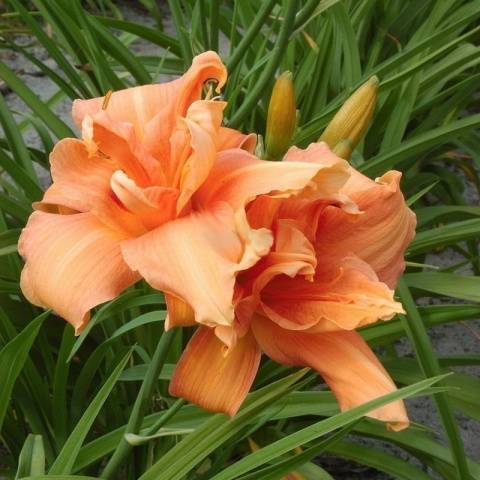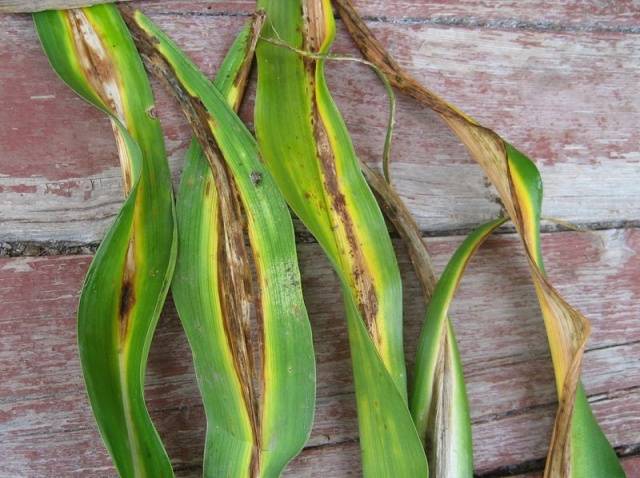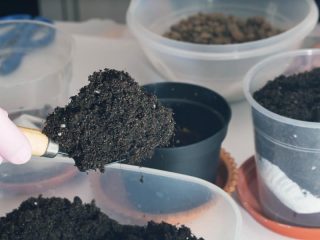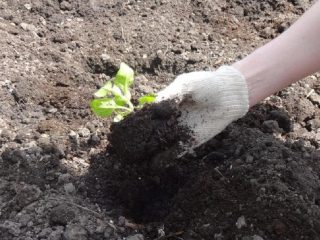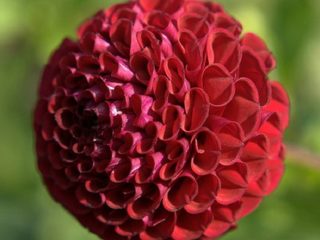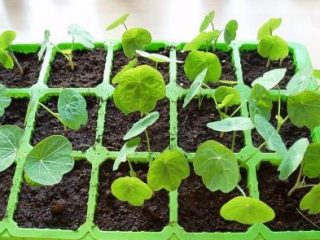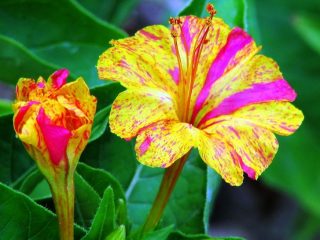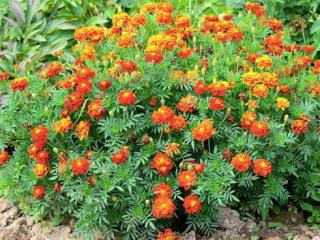Content
It would seem that every gardener knows about daylilies. These unpretentious, and at the same time beautiful plants can be found almost everywhere - in school flower beds, in garden plots, near shops and administrative buildings. This popularity is due to the fact that planting and caring for daylilies in the open ground is so simple and easy that even a beginner can carry out a number of activities.
Description of the plant
Daylilies belong to the Asphodelaceae family, the subfamily of Daylilies and have another name - Krasnodnev.
The name of the genus Hemerocallis, to which this plant belongs, is determined by one feature - each red-day flower opens its petals in the morning and closes in the evening. Forever. However, the number of flowers and the duration of flowering of the plant allow you to continuously enjoy bright, inimitable daylilies for a month.
A brief description of the daylily comes down to the following data:
- Refers to herbaceous, rhizomatous plants.
- The roots are fleshy, powerful, cord-like.In places thickened, sometimes forming stolons.
- Leaves are broadly linear, entire, large, arched or straight.
- The flowers are very large. The standard range of colors is yellow, red, orange. Varietal flowers have a much wider range of colors - pink, burgundy, lilac, dark brown, purple. The flowers are six-parted, funnel-shaped, with a small tube. Daylily inflorescences consist of 2-10 flowers. 1-3 flowers bloom simultaneously on one peduncle. Each flower blooms for one day. In some plant varieties, flowers bloom in the afternoon or late afternoon. The average flowering time of the plant is 25-30 days.
- Peduncles are tall, up to 1 m, sparsely leafy, rising above the leaves. According to the height of the peduncles, daylilies are conventionally divided into low-growing (up to 30 cm), medium (from 30 to 60 cm), semi-high (peduncle height from 60 to 90 cm) and tall - peduncle height more than 90 cm.
- The fruit is a triangular seed capsule containing a small number of black, shiny seeds.
Daylilies can be grown for decorative purposes, either in single plantings or in combination with other plants. Tetraploid varieties look very luxurious in flower beds and flower beds. Daylily bushes grow quickly, the flowers are much larger than those of traditional plants, and have a variety of colors.
Growing conditions
Daylilies are not capricious when planting and caring for them and do not require close attention. They grow equally well in shade and partial shade.However, in a lighted, sunny place, plants bloom more luxuriantly and brightly. In the shade, the colors become faded; daylilies bloom later and close their petals earlier.
It is worth noting that some plant varieties whose color shades are closer to dark tones (burgundy, dark lilac, dark brown) are best grown in partial shade; in the sun, their main varietal feature - individual colors - loses its uniqueness. In partial shade, daylily colors become more saturated and vibrant.
In some hybrid plant varieties, the flowers open fully only under bright sunlight. Therefore, when planting daylilies, pay special attention to the recommendations for planting the variety you have chosen. In total, daylilies should be exposed to sunlight for at least 6-7 hours a day.
The beginning of the growing season for daylilies is early. The first green leaves appear almost immediately as soon as the thermometer reaches a positive level at night.
Experienced gardeners plant daylilies in open ground in spring or autumn. But, like all plants, krasnodnevs easily tolerate spring planting, get sick less, and gain color earlier. The recommended distance between plants is 40-60 cm.
It is not for nothing that gardeners consider daylily to be a long-lasting plant - some specimens can grow in one place without replanting for up to 12-15 years. Therefore, before planting, carefully choose a suitable place so as not to disturb the flowers with an unscheduled transplant.
Before planting daylilies in open ground in the spring, familiarize yourself with some of the requirements that are the key to active growth and abundant flowering:
- Daylilies love sunny, well-lit places. The exception is varieties with dark shades of flowers - they fade from too bright sunlight. Therefore, it is advisable to plant them in places where the plants will be in the shade during the midday hours.
- Loose, light and fertile soil should retain moisture well. However, flowers do not like prolonged stagnation of water.
- The composition of the soil should be neutral or slightly acidic.
- It is not advisable to grow daylilies near trees and shrubs. It is difficult for plants to compete with these crops for moisture and nutrients. Flowering will be sparse and sparse, flowers become smaller over time, and varietal characteristics are lost.
The soil for growing daylilies in open ground is prepared in advance. Too heavy soil needs to be lightened - add a little sand and compost, dilute acidic soil with lime, chalk or wood ash, add complex mineral fertilizer to the poor soil. Dig up the area using a spade bayonet. Don't forget to choose the roots weed. Leave the beds alone for a few days.
Daylily is a plastic, soft plant. It quickly adapts to any changes and growing conditions. However, without following the rules of agricultural technology and the recommendations of experienced gardeners, it will be difficult to achieve long and lush flowering.Only proper planting of daylilies and proper care will help you grow these beautiful and unique plants.
Types and varieties of flowers
The first hybrid variety of daylily was bred in 1893 by biologist J. Eld. In 1975, the flower catalog already included more than 15,000 hybrid plant varieties. Ten years later, their number almost tripled - about 40,000. It is not known exactly how many varieties of daylily exist at the moment.
It is impossible to talk about all the varieties of these inimitable flowers. We invite you to appreciate the beauty and uniqueness of some varieties in the photo below.
- Ay On America
- Après Mois
- Best-seller
- Blizzard Bay
- Burgundy Love
- Wild Horses
- Pone of Profession
- Lacy Doyley
- Knight Ambers
- Ash Flame
- Siloam Baby Talk
- Siloam Double Classic
- Frans Hals
In addition to the variety of colors, modern daylily varieties have so-called ruffles or denticles along the edge of the petals; some specimens are distinguished by a peculiar pattern on the petals. There are even terry varieties of plants.
Reproduction methods
There are three ways to propagate daylilies:
- seeds
- air layering
- dividing the bush.
And each method is so simple to implement that it will not be difficult for you to grow these delicious plants in your garden.
Before planting daylilies in the spring, it is worth knowing that not all plant varieties reproduce by seeds. In many specimens, even when ripened, the seeds do not retain varietal characteristics or are not at all able to germinate and produce full-fledged offspring. Therefore, flower growers rarely grow daylilies from seeds.
Air layering
A simple and affordable method of daylily propagation is by air layering. 2-3 weeks after flowering, small rosettes begin to appear on the peduncles of some plant varieties. They are perfect for propagating flowers and retain all the varietal characteristics of the mother plant.
You can propagate daylilies as follows:
- Do not cut off the flower stalks; let the rosettes develop well.
- As soon as the cuttings grow well, cut them off along with the peduncle. Each rosette should be on a piece of peduncle 8 cm long, 4 cm at the top and 4 cm at the bottom.
- The rosettes are placed in water with roots for 1.5-2 weeks.
- After well-developed roots appear, the cuttings are planted in pots or open ground.
In the event that it is too late to plant daylilies in the flowerbed, the rooted rosettes will have to be planted in pots. In winter, provide the flowers with the same care as other indoor plants, and in the spring, plant them in a flower garden.
Seeds
Not all varieties of daylily are propagated by seeds. Hybrid seeds will not convey the varietal characteristics of the original plant. And in some varieties the seeds do not germinate at all. Therefore, this propagation method does not guarantee that you will grow exactly the flower from which the seeds were collected.
If you decide to try growing daylilies from seeds, you will have to follow the following planting algorithm:
- Soak the plant seeds in water for a day or two. Don't forget to change the water once a day;
- Sow the swollen seed material in a container. There must be holes and drainage at the bottom of the container. The soil for growing daylilies should be loose and nutritious.The distance between seeds is 2-3 cm, planting depth is 0.5-1 cm. When planting daylilies directly on a flower bed, the minimum distance between seeds will be 5 cm, row spacing will be 20 cm.
- When growing plants indoors, as soon as you notice the seedlings have 4-5 full-fledged leaves, pick them out into separate containers, or, if the weather permits, plant them directly in the flower garden.
Such plants bloom only for 2-3 years. Caring for daylilies after planting is practically no different from caring for other garden flowers.
Rules and terms of landing
Plant propagation by dividing the bush is the most popular and accessible to every gardener. However, the condition of your flower garden depends on how correctly the daylilies are planted and cared for in the open ground - either the plants will actively grow and give you pleasure during flowering, or they will be forced to fight for a place in the sun.
Recommended planting times
There is no clear answer to the question of when to replant daylilies: in spring or autumn. Planting times depend on several factors. The first is the age of the flowers: whether you are planting a young plant, or have decided to plant and rejuvenate an old bush.
Young, recently purchased daylilies can be planted in open ground at any time - in spring, summer, and early autumn. If there are no problems with planting in the spring, then in the summer it is advisable to plant young curtains in cool weather.
In autumn, flowers can be planted in September.The main thing is that the plant has enough time for successful rooting and preparation for winter.
Daylilies still need to be divided or replanted in the spring. By autumn, the plants will take root, grow well and become stronger. They will have enough strength to endure severe frosts without loss.
The second factor influencing the planting time of daylilies is climatic conditions. If in the southern regions with a mild climate you can plant plants without fear in mid-September, then in Siberia and the Urals it is better to replant daylilies in the spring.
How to plant rednecks correctly
Immediately before planting, daylilies need inspection and preparation. Young, acquired plant clumps should be carefully examined and diseased and affected areas should be removed.
Old bushes of plants need to be watered abundantly the previous day. Carefully dig up the daylilies with a pitchfork, trying to cause as little damage to the root system as possible. Divide the bush into several small sections.
It is advisable to separate sections from the edges, since the central part of the bush takes root less well. The peripheral parts of the plant have stronger roots, will grow faster and will hurt less.
Inspect the separated daylily bushes and remove the dead roots, prune the healthy ones a little. This stimulates the formation and growth of new roots. Daylily leaves are cut to a height of 20-25 cm so that the plant puts all its energy into rooting.
You can soak daylily roots in a light pink solution of potassium permanganate for disinfection or in water with the addition of root growth stimulants. The minimum soaking time is 3 hours.
After this procedure, the divisions are removed from the solution and allowed to dry a little. Now the daylilies are ready for planting in open ground.
It is advisable to plant daylilies in the ground in spring or summer in cool weather. Proper planting of daylilies involves the following activities:
- The planting hole is dug in such a way that the entire root system of the plant fits in it, with a little free space left on the sides. The optimal dimensions of the pit are: depth - at least 30 cm, diameter - from 40 cm, depending on the size of the division.
- A small mound is poured in the center of the planting hole and the daylily root system is placed on it. All roots must be carefully straightened. The roots should be directed to the side and at a slight downward angle.
- The depth level is clearly marked on the divisions - at the base of the rosettes there is a light green, almost white stripe. Place the daylily at the same height and cover the roots with soil.
- The root neck of the plant cannot be buried more than 2-3 cm. There should be no bare roots.
- Water the daylilies generously with warm water, being careful not to get it on the leaves.
After planting daylilies in the spring, the soil in the flower garden can be mulched to retain moisture.
Work in the flower garden
Despite their unpretentiousness, daylilies require care after planting in the spring. Watering, fertilizing, pruning - this is a list of necessary work that you should regularly carry out in the flower garden so that the plants always delight you with their lush flowering.
Regular and abundant watering is the main component of proper care of daylilies in spring and summer. The biological feature of the root system of plants allows them to withstand a long dry period. But the brightness, number of buds and size of flowers are greatly reduced. Remember that daylilies are moisture-loving plants.
With severe lack of moisture, daylilies drop their buds and the foliage loses its bright color. Therefore, it is advisable that the soil in the flower garden is always moist. If the summer does not indulge in rain, you need to water the plants as often as possible.
During the first year after transplanting or planting, daylilies do not need feeding. Plants have enough nutrients contained in the soil. But starting from the second year, flowers need to be fertilized regularly. Daylilies are fertilized in spring and summer.
Apply the first fertilizing - complex mineral fertilizer - in early spring in liquid or dry form. The second feeding of plants with complex fertilizer is carried out before budding. The third - 3-4 weeks after the end of flowering with fertilizers based on potassium and phosphorus. They will help plants recover from wild flowering and prepare for winter.
Pruning daylily bushes is carried out in several stages:
- In spring, trim off old leaves along the edges of the bushes, this will help the plants rejuvenate.
- After lush flowering, it is necessary to cut off all flower stalks.
- In the fall, when preparing the daylily for winter, you need to trim off the old, pale foliage. Young leaves that have grown relatively recently can be left.
As you can see, caring for daylilies after planting in open ground is not at all difficult. All activities are very familiar to every gardener and are not at all burdensome.
Possible problems during cultivation
Even the most unpretentious plants can sometimes be attacked by insect pests or the harmful effects of harmful spores and bacteria. Daylilies were no exception.
They do not cause any particular trouble for flower growers. But it is imperative to know what and who can threaten plants. When growing daylilies, you may encounter the following problems:
Pest, disease | Primary signs | Fighting methods |
Thrips | Flowers become ugly and shapeless, leaves are also affected. | Cut and remove the affected parts of plants, treat with insecticides. |
Viruses | Spots or streaks appear on the foliage, and overall the plant looks sick. | It is very difficult to cure. Most often, affected plants are dug up and burned. |
Daylily mosquito | Insect larvae appear in the buds. | Affected buds are torn off and removed from the area. |
Root collar rot | The root collar of the plant softens, acquires a dark color, and emits a putrid odor. The leaves begin to turn yellow and die. | Affected plants are dug up, cleaned of affected parts, and washed in a dark pink solution of potassium permanganate. You cannot plant daylilies in the same place - prepare another area for them. Before planting, disinfect and dry the roots of the plant well in the shade. |
Rust | Lack of buds or very poor flowering, slow growth, small, yellow-orange pustules on the leaves. | All affected leaves and those located next to the diseased ones must be cut off immediately.The plant is treated several times with fungicides until complete recovery. Drugs need to be changed with each treatment. |
Leaf striping | Light yellow streaks along the entire length of the leaves, most often located closer to the center of the leaf. The appearance of a large number of small red-brown spots, which soon increase in size. | The affected parts of the plant need to be cut off, and the bushes should be treated with foundationazole at a concentration of 0.2%. |
Sometimes when growing daylilies, other problems may arise that are not related to pests or diseases. Most often, flower growers encounter the following complications:
- Lack of buds. Reasons: deep planting, lack of lighting, excess nitrogen in the soil.
- Weak, brittle peduncles. Causes: excess moisture and nitrogen.
- Dark and reddish spots on the petals. Causes: traces of rain or sunburn.
- The buds do not open completely. The phenomenon is temporary; urgent measures are not required, since flowering is restored over time.
An expert will share with you the secrets of growing and propagating daylilies in open ground.
Conclusion
Planting daylilies in open ground and caring for them is not particularly difficult for both a professional and a beginner. The popularity of these truly beautiful plants is growing every year. A large assortment of varieties, a rich color palette and the amazing vitality of the plant are just a few of the reasons that influence the choice of gardeners in favor of the delightful daylily.
